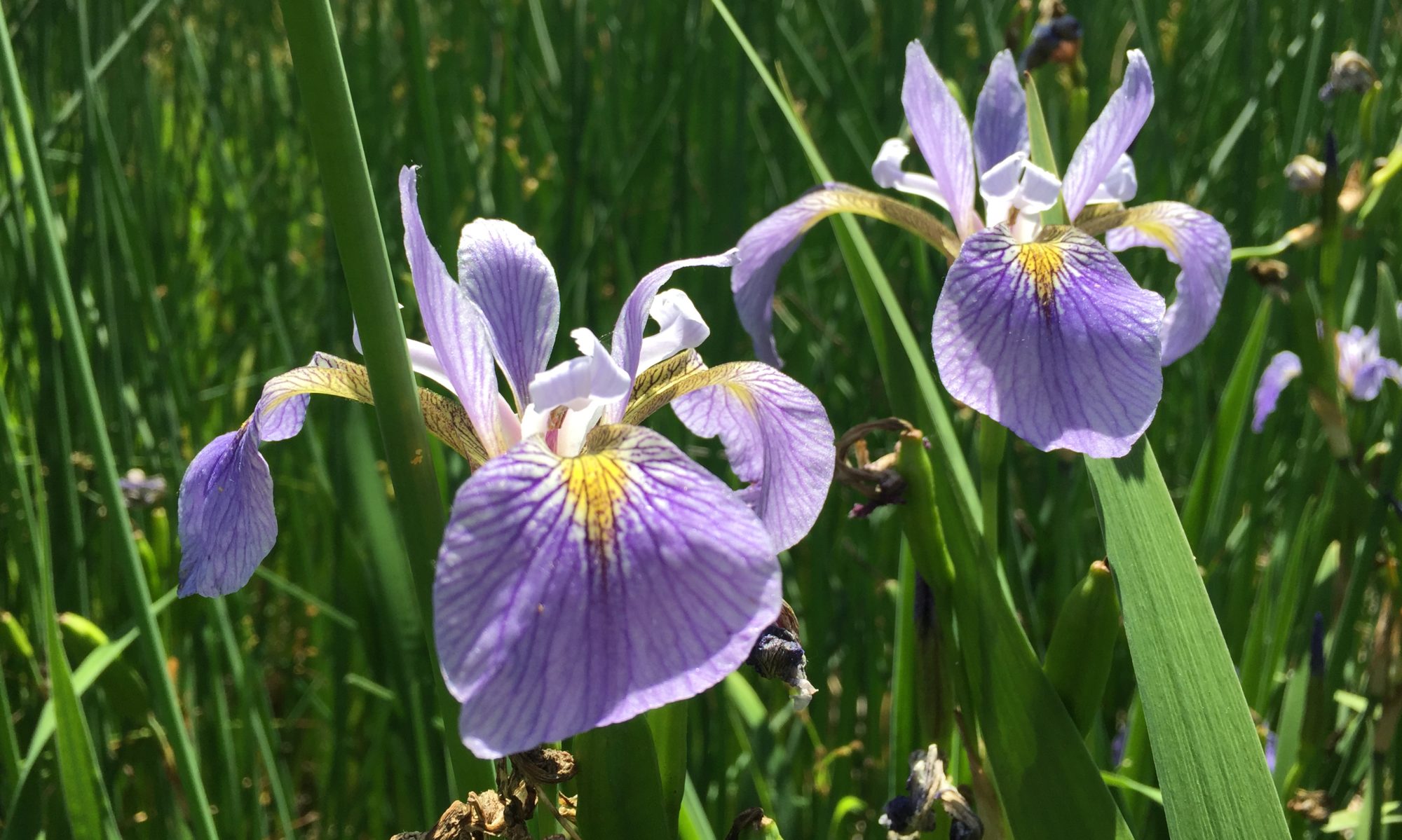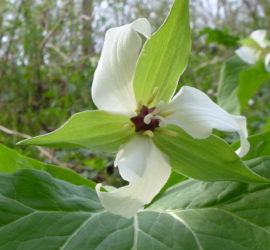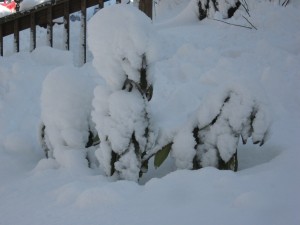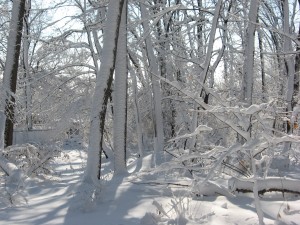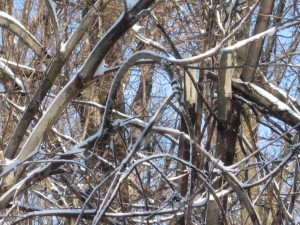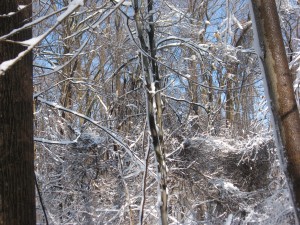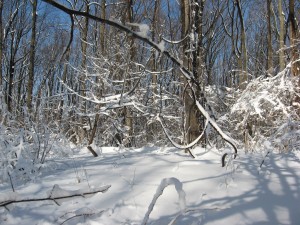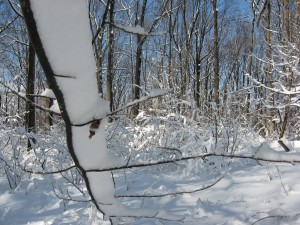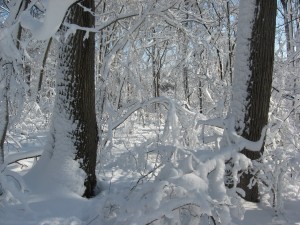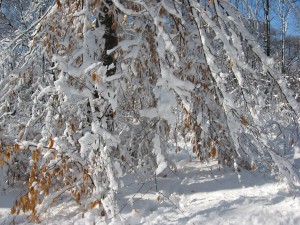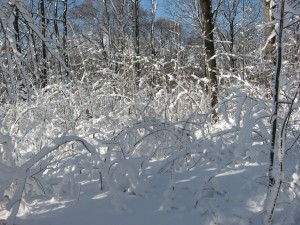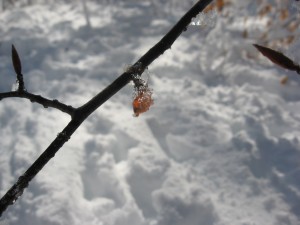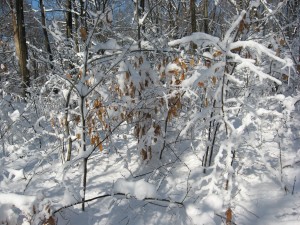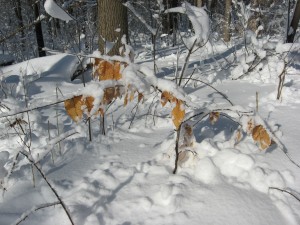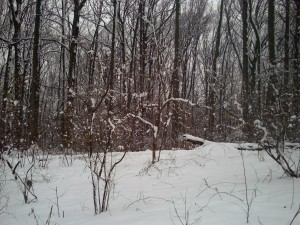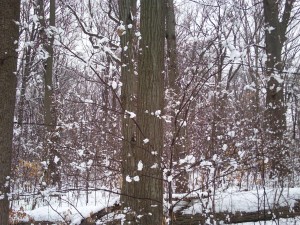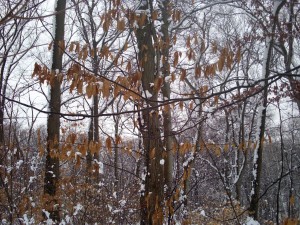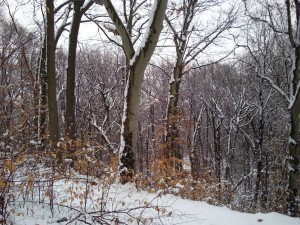
Walking the dog this morning, we noted how many small trees and shrubs in Morris Park were leaning heavily or were broken. These were only in the unrestored areas that have lots of vines covering them. Â In all of the areas we had worked on removing the invasive vines, the trees and shrubs were doing fine in this heavy snow. Pointing to a Tulip Poplar (Liriodendron tulipifera) that had broken in half under the weight, Sean said “if only we got to that one, it would’ve taken only a few minutes to remove those vines. Â Now its ruined.”

With large areas of the forest without tall trees, there is concern about the future of the forest canopy in the area of Morris Park we are focusing on. When the large trees are dying off one by one, and there are few mid-sized trees, a whole species of tree is blighted so badly that it never reaches even near maturity, and the small trees are under assault from the invasive vines, we wonder what it will take to bring this under control.
We have seen other areas of the park that are further advanced in this process of environmental degradation. It was difficult to even access these areas, because the invasives were so prevalant, they created an impenetrable wall.  We did manage to see them however, and it is not a pretty sight. No tall trees at all. The only trees were Ailanthus Altissima, the tree of heaven, covered in either  the invasive exotics Multiflora rose(Rosa multiflora) or Japanese honeysuckle (Lonicera japonica). Mile-a-minute vine covers the dead tree trunks of the former forest.  These areas do not look like a woodland at all. There are no herbaceaous plants on the forest floor . Everything is a dense thicket of invasive vines.
The area that we are concerned with is on its way to this final stage of forest destruction.There was this one area of Spicebush (Lindera benzoin) that looked especially at risk this morning. Â The shrubs were buried in the snow.

However, with 15 inches of heavy wet snow outside, the idea of going into the Park and off the trail (Which is used enough that the snow is compacted) was a bit daunting. Â However, cabin fever can be problematic, and it was worth a go to at least try to do something.
Properly dressed with insulated work gloves, a ratty old coat that can take a beating, work commenced here:

Not  a bad spot to spend the afternoon in.  Looking down, however is the work:
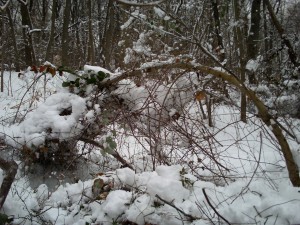
Here is  Spicebush and an unidentified tree about ready to break.  This is a combination of  vines and snow. Having just sharpened  the pruners with a file and a knife sharpener and with a drop of oil for smooth operation, the work began, cutting off the vines that were strangling these two trees.  The vines were Grape (Vitis spp.) Japanese Honeysuckle (Lonicera japonica), Oriental Bittersweet, (Celastrus orbiculatus) and Multiflora Rose (Rosa Multiflora).  In just a few minutes time it looked like this:
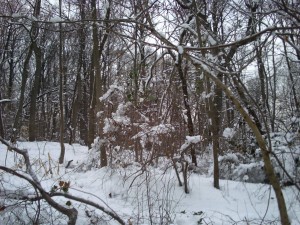
Then there was this one Spicebush buried in the snow. While it took an hour to dig out the car , this Spicebush was dug out of the snow and liberated in ten minutes:
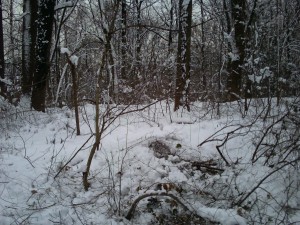
This, above, is the “before” picture.
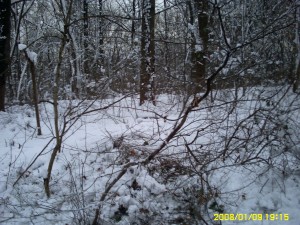
This is the “after” picture. (date incorrect) Â The Spicebush just rose up from the snow and ice as the vines were cut away. It was very satisfying to watch the shrub spring back up to a vineless, healthy future.

Hopefully tomorrow, there will be time to address this urgent matter.
